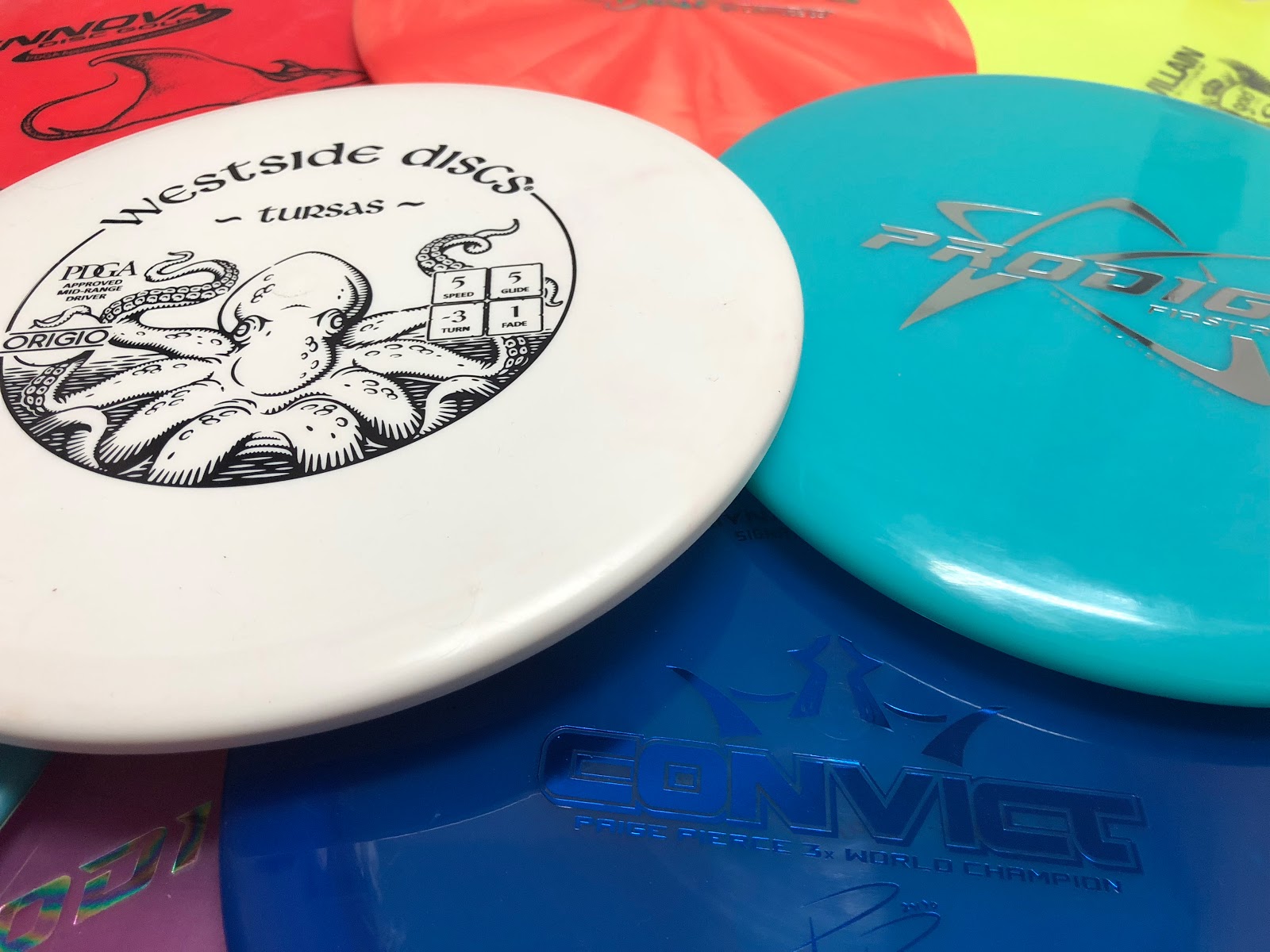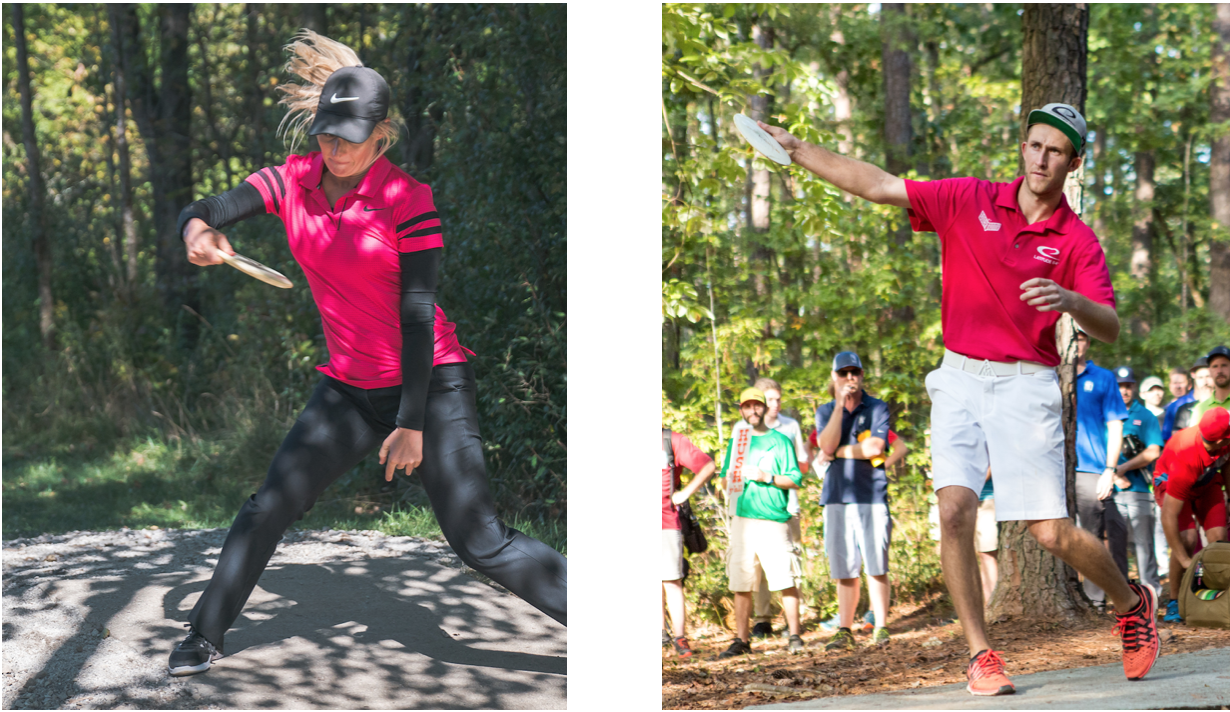
When I started playing, I was a little intimidated by the number of discs out there. I had all sorts of questions. For instance, was there really any difference between putters like Innova’s Aviar or Dynamic Discs’ Warden? Sure, I could feel a slight difference in the rim, but weren’t they supposed to serve the same purpose? Which one would give me a perfect putt or upshot?
Then, I noticed the flight numbers stamped on each disc and thought I’d found the answers.
For those who may not know, flight numbers are given to a disc by its manufacturer and indicate the path it's expected to follow during flight. The most common format you’ll see is a four-number system, with each number corresponding to a characteristic described below. In these definitions, "right" and "left" are relative to a backhand throw by a right-handed player; for forehands and left-handed shots, just switch out the directions.
- Speed – How quickly a disc moves through the air. Higher numbers mean faster discs.
- Glide – A disc’s ability to stay in the air once released. Higher numbers mean longer flight time.
- Turn – A disc’s inclination to turn right early in its flight. Higher numbers mean less turn to the right.
- Fade – A disc’s inclination to move or come back to the left as it slows. Higher numbers mean a higher degree of leftward movement.
The Pros of Flight Numbers
Flight numbers are helpful tools for quickly and easily understanding the way a disc is intended to fly. Navigating the hundreds of available molds in your local shop can be a challenge, but knowing what each disc is designed for can make your selection process much easier.
For an example, let’s go back to that Aviar vs Warden quandary from before. These two discs have very similar numbers:
DD Warden #s: Speed: 2 Glide: 4 Turn: 0 Fade: 0.5
Innova Aviar #s: Speed: 2 Glide: 3 Turn: 0 Fade: 1
In this case, the Warden’s higher glide number tells you that it tends to stay in flight slightly longer than the Aviar, meaning you might get more distance out of it. The higher fade number on the Aviar lets you know that the disc should come back harder to the left than the Warden as it ends its flight (in a RHBH throw), making it a better choice if you need a disc you can trust a tiny bit more in a windy area. Paying attention to these details could make you a lot happier after your next disc purchase.
The Cons of Flight Numbers
It’s important to note there’s no standard or third party testing organization for discs, so there is an element of subjectivity to each manufacturer’s testing and rating process. Typically, the flight numbers for any given disc will indicate how that disc would fly for an experienced Advanced or Pro player. This can be a huge source of frustration for new players. When I started playing, I expected each disc would fly according to its numbers and was constantly disappointed when my throws didn’t match up.
To add even more variability into the equation, no two players throw exactly alike every time, so it’s highly unlikely that your throw will perfectly mimic the conditions under which the disc was tested. This can lead to quite a bit of variation from player to player.
Overall, it’s safe to say that flight numbers are excellent guides, but they are by no means a guarantee. While they can be helpful when selecting new discs, flight numbers don’t hold much significance beyond that. Once you take a new disc home, it’s up to you to practice with it and learn how it flies. And even if a disc doesn’t fly exactly according to its numbers, it can still be an incredibly valuable addition to your bag.
Flight Number Quick Tips

- High speeds do not equal more distance unless you have the arm speed to make the discs match their true potential, so...
- ...steer clear of high speeds until you’re getting the right flights on slower discs—this indicates your arm speed is where it should be to fully utilize high speed drivers.
- Practice getting putters and mids with high glide and low fade to go far while staying on the straight, hyzer, or anhyzer lines you put them on (see images above for examples of anhyzer and hyzer). This is a great way to perfect your form.
- If you live in a windy area, having a few discs with little turn or glide and high fade can be useful because their flights are usually predictable even in the wind.
- Don’t beat yourself up if a disc doesn’t fly exactly according to its numbers; practice with it and find out how it works best for you.
